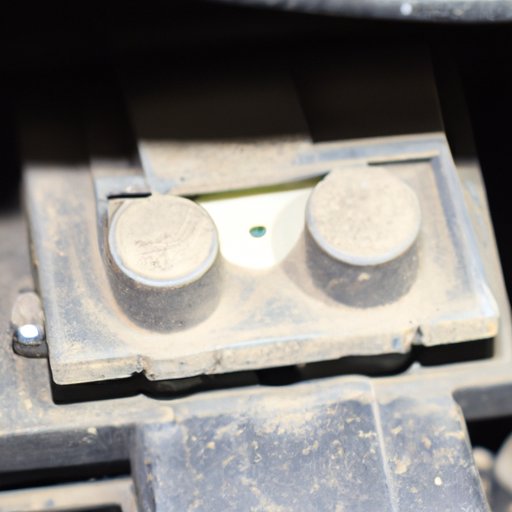
Introduction
A car is a complex machine, and it requires several systems to work together seamlessly to run smoothly. One critical component of the vehicle’s engine is the mass airflow sensor. The part measures the air that enters the engine and sends signals to the car’s computer to adjust the fuel and air mixture to achieve optimal performance. Drivers who understand the common symptoms and signs of a bad mass airflow sensor can diagnose and fix issues before they cause more significant problems.
A Comprehensive Guide to Mass Airflow Sensor Symptoms
The mass airflow sensor is a crucial component of a car’s engine management system. However, over time, it may begin to malfunction, causing your vehicle to misbehave. Here are some common symptoms to watch out for:
Engine Stalling or Misfires
If your engine is stalling or misfiring, a bad mass airflow sensor may be the culprit. The sensor communicates with your car’s computer to regulate the fuel and air mixture and maintain a smooth-running engine. Failure to do so may result in the engine stalling or misfiring while idling or driving.
Poor Acceleration
If your car is struggling to accelerate, it may be due to an issue with the mass airflow sensor. The sensor signals to the car’s computer how much fuel it needs to burn, and if the sensor is faulty, the engine receives an incorrect signal, leading to difficulty accelerating.
Check Engine Light
The check engine light is a warning signal that something is wrong with your vehicle. If it’s on, it could signal a problem with your mass airflow sensor. The computer system detects the irregularity and triggers the engine light to alert drivers.
How to Troubleshoot a Faulty Mass Airflow Sensor
If you suspect that your mass airflow sensor is faulty, here are some tips to help you pinpoint the issue:
Check for Dirty or Clogged Sensor
Contaminants such as dirt, dust, and oil can clog up the sensor, making it difficult for it to function correctly. Inspect the sensor and check for any signs of dirt buildup. If you notice any, clean it off and re-install it, then check if that fixes the issue.
Inspect for Loose or Damaged Wires
Check the electrical connections for damage or looseness. The sensor requires clean connections to the computer to work correctly. Check for broken, frayed, or disconnected wires, and if you find any, replace or repair them.
Test the Sensor
If you’ve ruled out other issues, such as electrical connections or dirt buildup, it’s time to test the sensor. Follow the manufacturer’s instructions to test it on your own or take it to a professional.
The Importance of a Well-Functioning Mass Airflow Sensor
The mass airflow sensor may be a small component, but a bad one can lead to significant problems in your car. Ignoring the warning signs can result in reduced fuel economy, damage to other engine parts, and even safety issues.
Reduced Fuel Economy
A poorly functioning mass airflow sensor leads to an improper fuel-to-air ratio, resulting in poor fuel economy. Your car may require more fuel to execute the same operation, which leads to increased fuel consumption and decreased gas mileage.
Damage to Other Engine Parts
A bad mass airflow sensor puts extra stress on other engine components, such as the oxygen sensors and catalytic converter, in the vehicle. Over time, this added stress can lead to costly repairs and replacements.
Safety Issues
A malfunctioning mass airflow sensor can compromise your vehicle’s safety. The sensor monitors the air that enters the engine, and if the sensor fails, the engine may receive incorrect signals, leading to a poorly running engine and, in extreme cases, stalling or misfiring while on the road.
Understanding Mass Airflow Sensors
Mass airflow sensors act as the lungs of your car engine, measuring the air that enters the engine and communicating with the car’s computer to adjust fuel delivery. Without the sensor, the engine wouldn’t know how much fuel is required, and this would lead to poor performance and increased pollution.
Why Mass Airflow Sensors Are Important
Your car wouldn’t perform well without the mass airflow sensor. It measures the correct amount of air and allows your vehicle to achieve peak performance. Oxygen sensors, catalytic converters, and the gas mileage of the vehicle are reliant on the air-to-fuel ratio that the mass airflow sensor creates, so it’s crucial to maintain the sensor’s health.
DIY Guide to Replacing a Mass Airflow Sensor
If you’ve diagnosed your mass airflow sensor as the issue, here are some steps to help you replace it yourself.
Step One: Locate the Sensor
The mass airflow sensor is usually located between the air filter and throttle body in the engine compartment. Some vehicles have the sensor inside the air filter box.
Step Two: Disconnect the Sensor
Disconnect the wiring harness, vacuum line, and clamps that connect the sensor to the airbox and throttle body.
Step Three: Remove the Sensor
Remove the sensor from its position. Some sensors require a socket or wrench to remove, while others use a Phillips head screwdriver.
Step Four: Install the New Sensor
Install the new sensor in place of the old one, making sure to reattach the wiring harness, vacuum line, and clamps.
Conclusion
Your car’s mass airflow sensor is a critical component that ensures your engine is functioning correctly. A bad sensor can cause problems such as decreased fuel economy, damage to other engine parts, and even safety concerns. If you notice any signs of trouble, such as a check engine light, engine stalling, or decreased acceleration, troubleshoot the sensor, and get it fixed as soon as possible.





